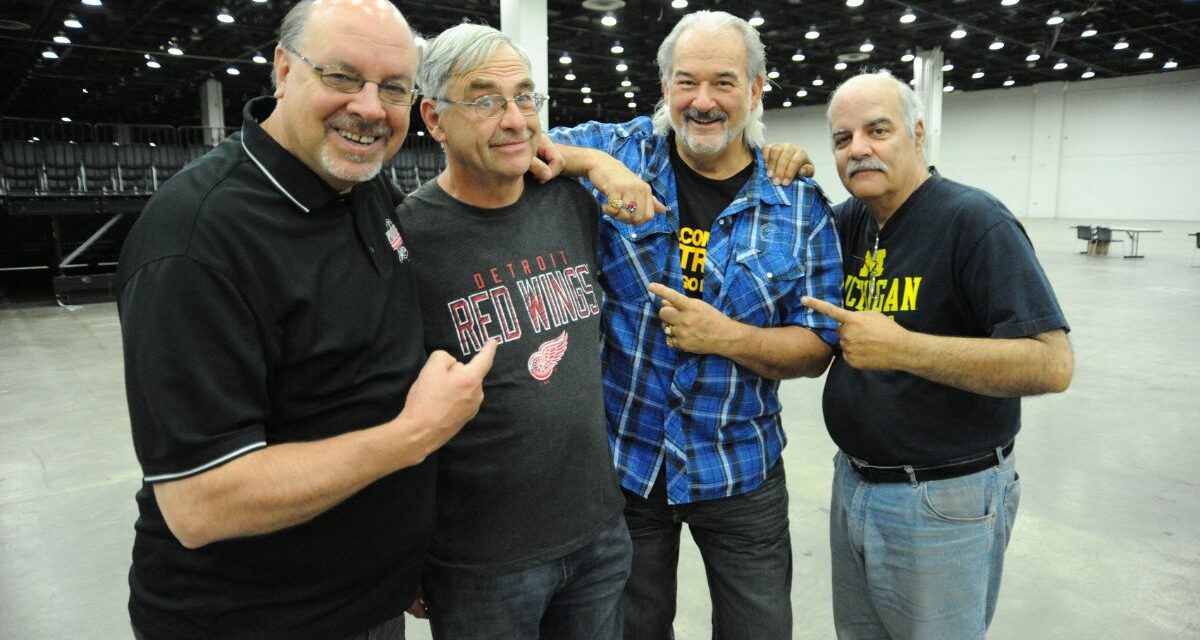While you might not know the name Brian Bukantis, you will know his work as the publisher of Strangehold and Body Press magazines, and as the man behind Goldmine Magazine: Record Collector & Music Memorabilia.
Bukantis’ death at age 73, on February 17, 2023, was not unexpected, as he had been in poor health for many years.
It has left friends and colleagues considering Bukantis’ legacy.
In the late 1960s and early 1970s, there was a tight-knit group out of the Detroit scene, wrestling fans who became much more.
Gary Mancuso was one of them and he and Bukantis became best friends.
“He started and published Arena magazine in 1972, which later became known as Stranglehold, and was sold outside in front of Cobo Arena in Detroit at all the matches every other Saturday night,” Mancuso wrote in tribute. “That is, in fact, how myself and fellow long-time friend ‘Handsome’ Gary Kamensack met and got to know Brian.”
Dave Burzynski was another of those Detroit kids, superfans who knew all that was going on locally, and participated in the larger wrestling scene through fan clubs, newsletters, and attending fan conventions run by the WFIA. A photographer and writer, later Burzynski became manager “Supermouth” Dave Drason.
“I first met Brian in 1969 when a group of us fans would gather at Cobo Arena to talk wrestling, trade pictures and exchange material we gathered from pen pals around the world. I contributed to his Arena magazine that he started selling outside of Cobo Arena, much to the dismay of The Sheik and the Big Time Wrestling (BTW) promotion. He contacted city hall and was told that the promotion had no impact on what he could sell on the city street,” recalled Burzynski.
Brad McFarlin was another of the “Detroit 5” and called Bukantis “the elder statesman.” “We all knew each other for years and years,” said McFarlin, who was also a photographer and writer, and became manager “Handsome” Johnny Bradford.
With the Arena newsletter being sold outside the arena, “The Sheik” Ed Farhat and his wife, Joyce, hired Bukantis to do the Body Press magazine for the Detroit territory. Bukantis would move on, hired to do the Stranglehold programs for Dick the Bruiser‘s competing WWA promotion at Olympia Stadium in Detroit.
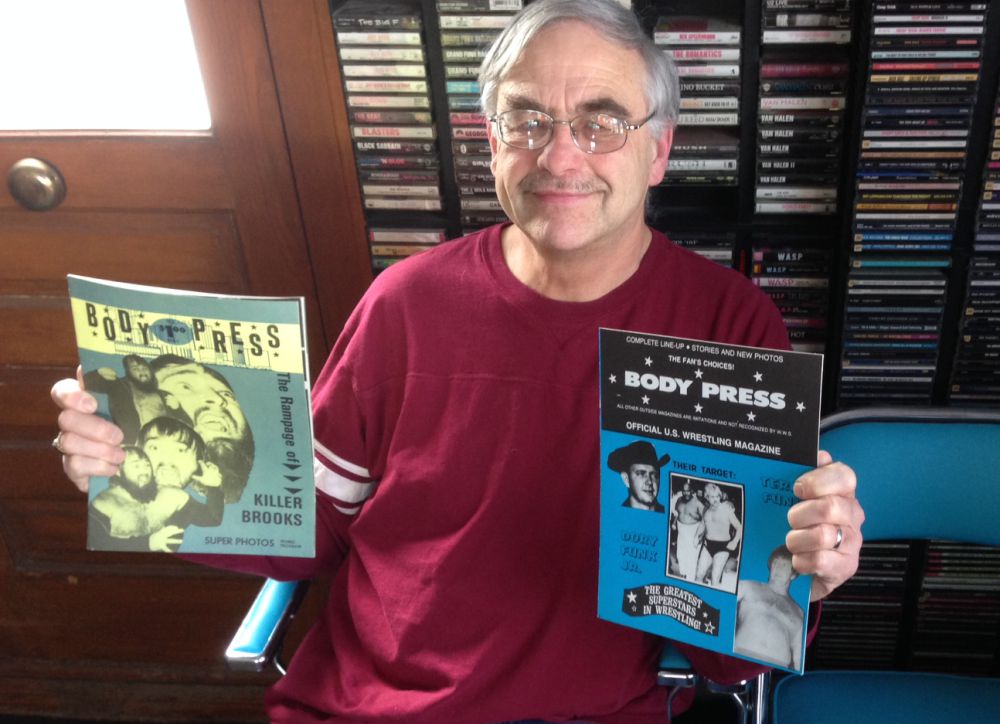
Brian Bukantis showing off some vintage issues of Body Press. Photo by Dave Drason Burzynski
“That [Arena] fanzine turned into the more polished Stranglehold magazine that became a big hit. When I started working for Big Time Wrestling, I had to quit supplying him with pictures and material but we remained friends nonetheless,” said Burzynski. “He then took his talents to the rival Dick the Bruiser promotion across town and started taking photos and publishing the program for the WWA. When the promotional war ended, he was left without a wrestling home.”
Next up, Bukantis, Mancuso and Kamensack were back doing Body Press and taking all the photos for the Detroit promotion. In an email to this writer, Bukantis noted that The Sheik’s son, Captain Ed George, was part of the reason he stopped working on Body Press. “This was in the late ’70s when the promotion was going down the tubes and they were cutting corners everywhere,” wrote Bukantis. “There was some kind of story in the Body Press that he didn’t like, I don’t even remember what it was, so basically he said, ‘We can’t pay you for this issue, you owe us one for that bad story in the last issue.’ That was basically the end of me doing the Body Press for them. By that time I had a very successful real world publication going (Goldmine – record collectors mag) and wrestling had become just a hobby and not a business for me.”
After The Sheik went out of business, the trio of Bukantis, Mancuso and Kamensack often traveled together to area shows, including across the border to cards promoted by “Bearman” Dave McKigney in southern Ontario.
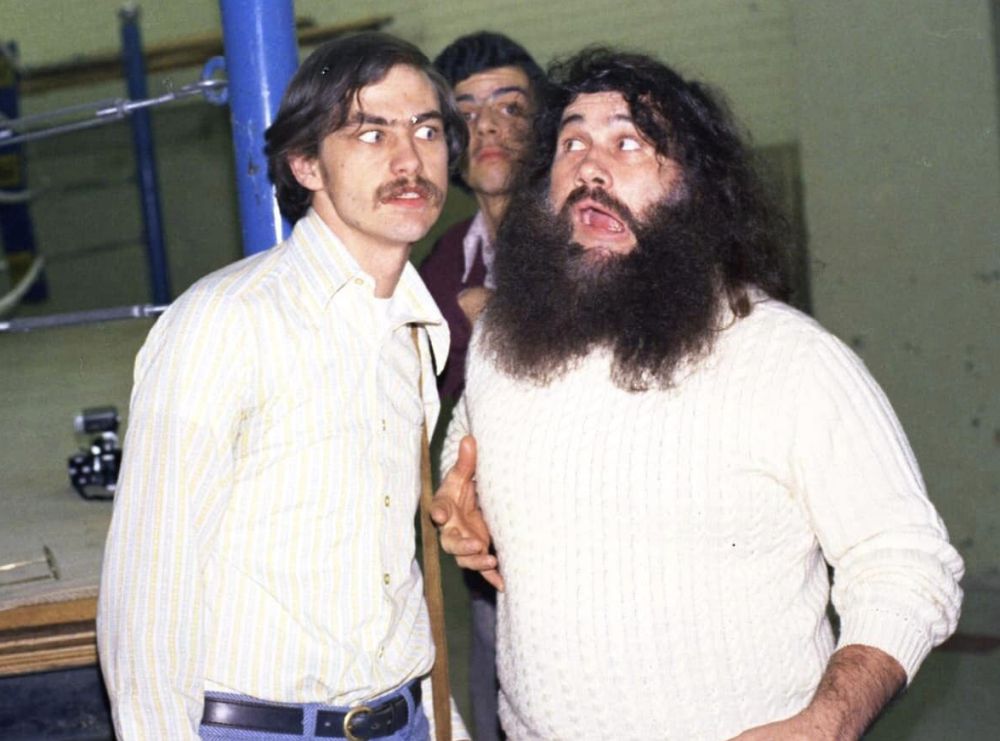
Brian Bukantis and Bearman McKigney. Photo by Gary Mancuso
“Whenever promotions I was working for were set to tape TV at many shows, I brought in Brian as the commentator,” said Burzynski. “He was no Lord Layton or Terry Sullivan but he did a capable job and had fun doing it. We’d get together in Luis Martinez‘s basement and film promos for those shows, having the time of our lives laughing at the shenanigans that ensued.” Bukantis also served as a ring announcer as well.
Mancuso noted that Bukantis also published “the country’s top record collector’s magazine, Goldmine, and even a successful movie collector’s magazine.”
Goldmine was first published in September 1974, printed by Bukantis out of Fraser, Michigan. The newsletter — initially $2 for four issues — focused on collectors of records, tapes and, as the times changed, CDs. There were interviews with musicians of all genres, past and present, and listed discographies decades before the Internet made it a click of a button search. It eventually merged with a similar magazine, DISCoveries, but that was under different ownership.
The Detroit Free Press wrote about Goldmine in its April 10, 1980 edition, with Mike Duffy penning:
Five years ago, Bukantis, a St. Clair Shores native, now 30, founded Goldmine magazine, a publication devoted solely to a subculture’s fanatic desire to collect rare records. What began with a $50-investment as a four-page, one-man operation with several dozen subscribers and an uncertain future has grown to a fat and sassy success as a publication believed to be the largest of its kind.
It has issues of 150-plus pages, a circulation of more than 8,000 and profitable offshoots such as a book-selling division.
“I expect to be doing close to $1 million in gross revenue in two years,” Bukantis said.
“When I started Goldmine, I thought I had a chance of filling a need. I thought maybe I could make a living for myself. I didn’t want to work for a grocery store anymore. Now it’s making several people a living, and that’s nice.”
Noted Bukantis in the Free Press: “I wasn’t a record collector when I started this. I was interested in publishing and printing and media and entrepreneurship.”
Goldmine was only one of many publications Bukantis had a hand in.
Born on November 5, 1949, he grew up in St. Clair Shores, Michigan, the youngest of five children. He actually put out a small newspaper for his neighborhood called the Elmira Star.
At high school, he worked on the school paper, but also self-published a humor magazine called Glop, which he called “a cross between Mad Magazine and the National Enquirer.”
Higher education wasn’t Bukantis’ cup of tea, and he dropped out of Macomb County Community College after two years studying journalism.
Then came the wrestling obsession and programs. Bukantis was also an excellent photographer of the matches. All the while, Bukantis worked at a grocery store.
Bukantis sold Goldmine in 1983 to Krause Publications, after running it for eight years. At the time, Bukantis had also been doing a magazine called Video Shopper, which focused on VHS tapes for collectors.
Krause had a publication called Movie Collector’s World, which Bukantis took over. He ran that bi-weekly magazine until 2012. The Detroit Free Press‘ Bob Talbert was a subscriber and wrote about how he would “drift back into nostalgia land, replaying my growing-up years living with a father who managed all the motion picture houses in town.” Talbert described the magazine: “A behind-the-scenes world of movie posters, shadowbox stills and movie press photos, advertising-filled press kits and publicity shots. One of a kind items — sent from the studios only to the theater managers and film distributors across the country. Great work to a limited audience.”
As an expert on both collecting music and movie memorabilia, Bukantis was often sought out for quotes in newspapers.
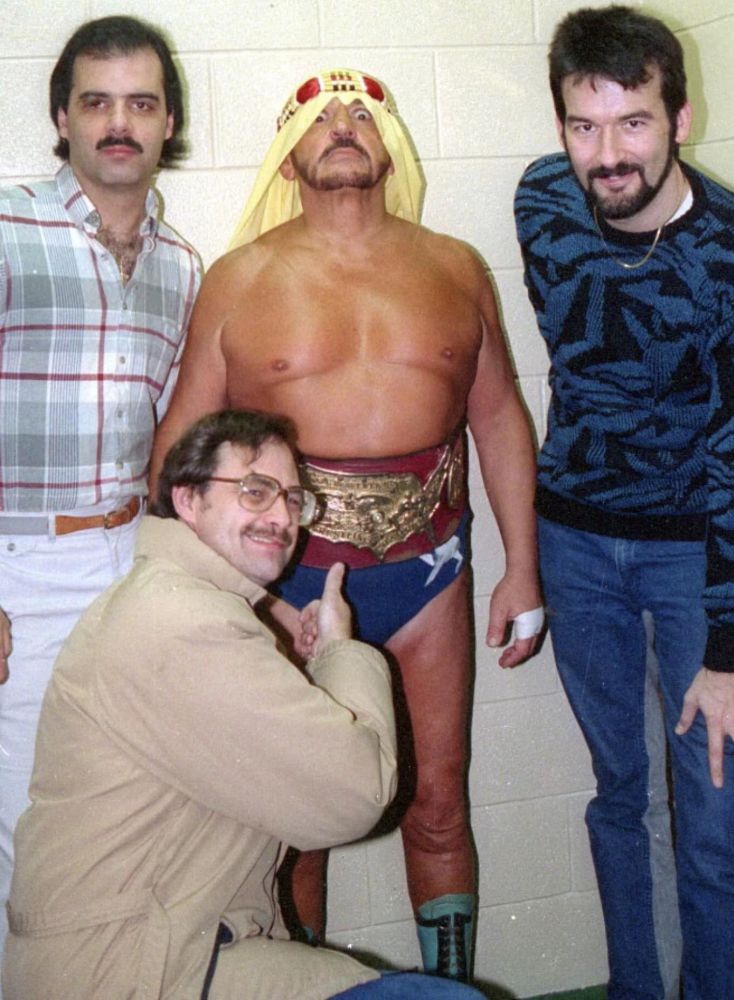
Gary Mancuso, The Sheik, Gary Kamensack and a kneeling Brian Bukantis. Photo courtesy Gary Mancuso
In 2003, Bukantis bought the rights to Wrestling Revue from Norman Keitzer’s Pro Wrestling Enterprises and became its new owner and publisher. Wrestling Revue was relaunched, featuring new articles and reprints, and tons of photos from the massive archives that Bukantis had amassed, including oodles (24,000 photos!) from Keitzer. (Much of it was sold to Brian Last a few years back.) It lasted six hard copy issues, until transferring into electronic format.
Burzynski was one of Bukantis’ first calls after buying the archive. “I went to his office/home and saw the enormous amount of file cabinets he acquired and we went through file drawers for hours just looking at the history of wrestling in photos,” recalled Burzynski, who was a part of the revamped Wrestling Revue. “When the first issue was published, we talked and met quite often to strategize about the next and upcoming issues.”
Bukantis also printed some books based on the archives, including two editions of This Saturday Night with Burzynski, and a collection of women wrestlers. “This Saturday Night was filled with photographs from the BTW era,” said Burzynski. “He then asked if I was interested in doing a second This Saturday Night but with my extensive files of photos only. We did and it was an enormous success. When we ceased publishing, because of lack of interest from old-schoolers, I asked if I could borrow files from his archives to do tribute videos of all the biggest stars of the ’50s and ’60s. He was happy to comply and deliver a box of files every so often for me to scan and do my editing handywork. We would sit and chat for hours, cutting old-school promos on each other, mimicking our favorite stars from times past. We’d giggle like school girls and have fun reminiscing.”
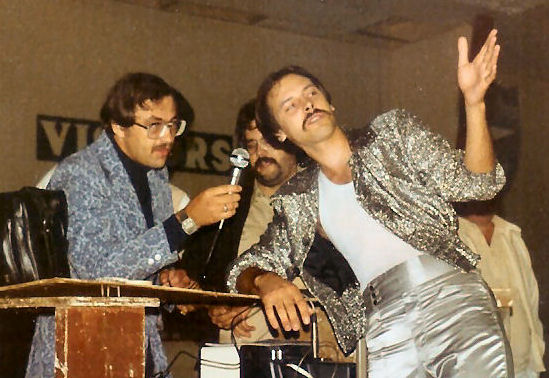
Brian Bukantis interviewing “Supermouth” Dave Drason.
Bukantis sold prints of photos at WrestlingRevue.com until electronic complications arose and he never relaunched the website. His photos, both personal and the Wrestling Revue archives, were used through the years at SlamWrestling.net and in various publications, including The Pro Wrestling Hall of Fame series of books by this author and Steve Johnson.
There is a legacy there, said Burzynski. “He wasn’t a wrestler, he wasn’t a manager, a referee or a promoter but a first-class editor, writer, commentator and a friend to all. If anyone needed a photo for a book or project they were working on, he would graciously be the first to step up with any help. He had a deep passion for all things wrestling and the community of friends he accumulated over the years will surely miss him. I know I do already.”
Most recently at SlamWrestling, Bukantis helped with the obituary on Tom Farhat, one of two sons of Ed and Joyce Farhat, including unique and rare photos, like the one below.
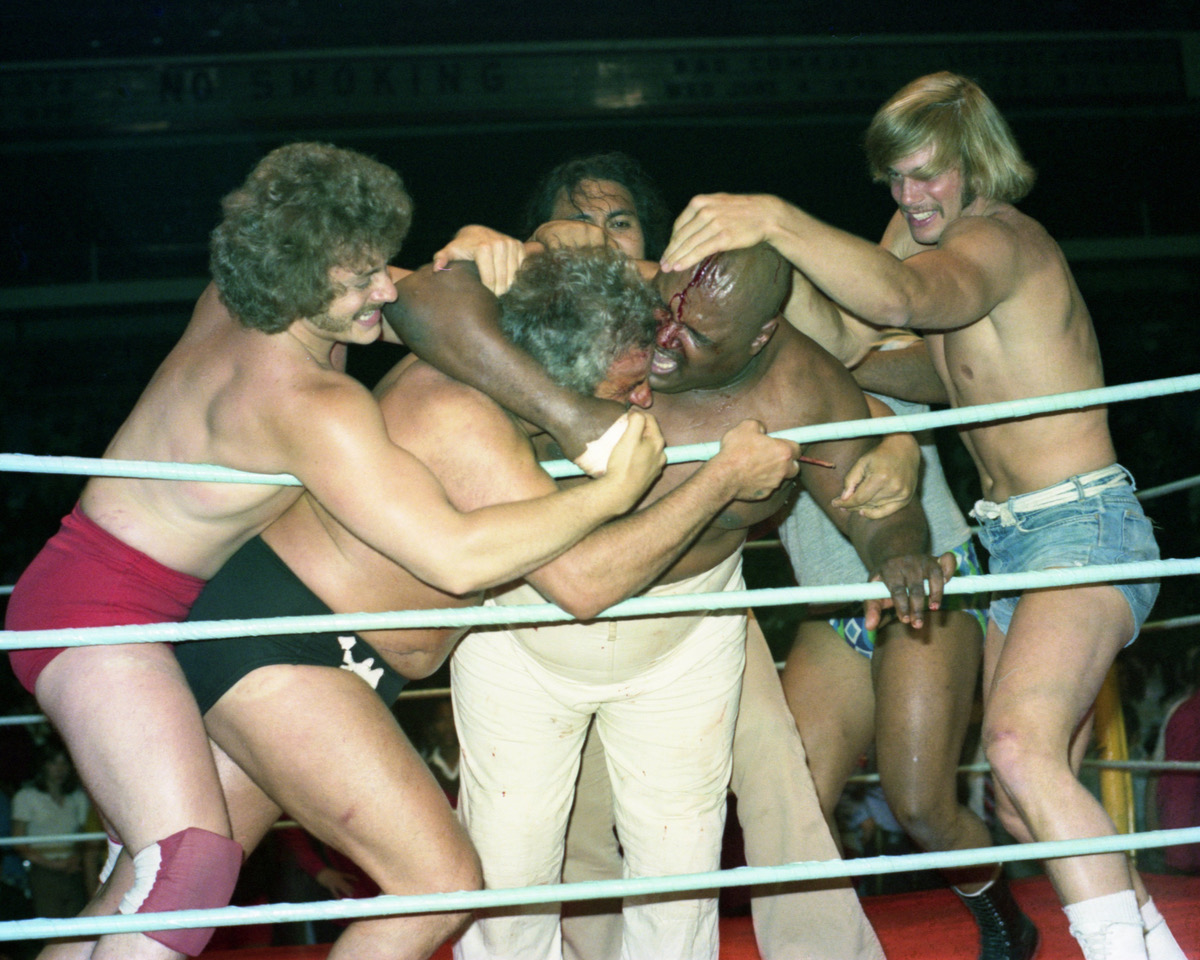
Mike Thomas on the left, was a nephew of Ed Farhat, working with Tony Marino (in rear) and Randy Poffo (far right), trying to separate The Sheik and Abdullah the Butcher. Photo by Brian Bukantis.
Those Detroit programs that Bukantis worked on stand out, and Brian R. Solomon, author of Blood and Fire: The Unbelievable Real-Life Story of Wrestling’s Original Sheik, used them as a resource. “Brian was a dedicated fan who used his passion for wrestling to become an integral part of the promotional end of the business, especially during the 1970s,” Solomon wrote in an email. “Guys like Bruiser and The Sheik saw the value in his dedication and his skill, and let him into their very closed world. I was honored to be able to get his recollections and thoughts on that amazing era when we talked for my book, and several of his wonderful photos made it into the book as a result.”
Burzynski was asked to “kayfabe” the rest of the wrestling community about Bukantis’ failing health. “During it all, we’d occasionally get together at our favorite pizza haunt or chat whenever he was up to it health wise. In recent time, he would often post many of his photos on our BTW Facebook group.”
McFarlin lamented on the deaths in the wrestling world lately, many with ties to Detroit. “This one hurts. Brian was a good guy, a good friend. Kind of the glue that held us together … and now we are four. Goodbye Brian. I’ll miss you.”
Mancuso was there for Bukantis until the end. “Now, 51 years later, I’m filled with all the wonderful memories and great times we spent together. Brian and I texted each other just about every day, whether it be about wrestling or just to see how each other was doing. Myself and all who had the good fortune to know Brian, will truly miss his sense of humor, his unselfish ways and most of all, his devoted friendship. Wrestling was his life in the ’70s and ’80s, and his contributions to the wonderful sport we all love will be truly missed.”
Brian Bukantis is survived by his children, Dale (Janet), Dawn (Butch), Douglas, Brian II (Jacqueline); his grandchildren, Anthony, Courtney, David, Ashley; great-grandchildren; Neveah, Brendan, Gracie; his siblings Toni, Michael, Doug, his beloved family dogs, Winnie, Wesley, Mattie, Timber, and Bello. He was preceded in death his wife, Betty, and children Debbie and David, along with his brother Dennis.
TOP PHOTO: “Supermouth” Dave Drason Burzynski, Brian Bukantis, “Handsome” Gary Kamensack and Gary Mancuso, at a fan fest in Detroit in October 2017. Photo by Mike Mastrandrea, www.mikemastrandrea.com
ADDENDUM: Here is the funeral information for Brian Bukantis: A visitation for Brian will be held Friday, February 24, 2023 from 2PM until 8PM at Kaul Funeral Home. A visitation will occur Saturday, February 25, 2023 from 10 AM until 11AM a Funeral Service at Kaul Funeral Home, 35201 Garfield Rd, Clinton Township, MI 48035. Burial will be at Cadillac Memorial Gardens East, Clinton Township, MI.
